In this guitar lesson, I’ll put Trey Anastasio’s solo on Limb By Limb from Story of the Ghost under the microscope, and break it down into 11 different licks. We’ll study the concepts behind this masterful piece of work, and then figure out how you can use these concepts in your own playing.
[Title photo credit to Dave Vann]
In this solo, Trey:
- nails incredibly complex single note rhythms
- masterfully mixes colorful modes
- traverses fast arpeggios effortlessly
- throws in classic bebop approaches
- adds modern scale superimpositions
- tears through tasteful blues licks
Trey pretty much gives us a history of 20th century western music in a sixty second guitar solo.
Behind him, the rest of the band is supplying some intricate, supportive interplay that makes his sophisticated guitar work really pop.
We’ll also discuss, in detail, the various scales, modes, arpeggios and techniques that Trey uses in this solo.
The purpose of this lesson is to find out what he’s playing, how he’s playing it, and why it sounds so damn good.
PS: I’m going to ramble for a while about why this solo and this record is so special to me. Use the link below to skip right to the lesson.
Click/Tap Here to Skip to the Lesson
Why I chose to transcribe and analyze this solo
I’ll never forget the experience of listening to The Story of Ghost for the first time as a kid.
I got my hands on a copy not too long after the album was released in late 1998, and I was completely obsessed.
For a 14 year old kid that was new to the scene, it wasn’t as easy to get your hands on live tapes back then, so the studio Phish catalog became my bible out of pure necessity.
I even remember riding the rickety dial up train to an AOL Phish chat rooms and rec.music.phish, and begging to be a leaf on some heady vets’ trading BnP (Blank and Postage) vine, but to no avail.
To you young’n’s, the BnP process involved snail mailing a strange Phan an envelope with blank tapes and return postage, so that they could copy freely tradable live Phish recordings to your blank cassettes tapes, and mail them back to you.
So the next time you’re on Youtube and frustrated the multi-cam 4k Phish show you’re trying to stream is buffering too slowly, remember this story.

Most Phish fans look at me like I’m crazy when I tell them that Story of the Ghost is a complete masterpiece, from beginning to end (of session). It’s full of powerful, unique tunes that didn’t quite sound like any album before it, or any after.
Although Story wasn’t full of intricate fugues and crazy time signature changes, the album was crackling with an indefinable and explosive experimental energy.
Then there were the little things, like Trey’s wailing siren that followed you from track to track, like a specter through a dream.
I will especially never forget what it was like to hear Trey’s solo on Limb by Limb. I remember exactly where in my bedroom I was sitting when I first heard it.
Hell, I can’t remember what happened 8 minutes ago from this moment, but I can remember what I ate for lunch that day almost 20 years ago.
In this solo, Trey seemed to channel a lot of my jazz heroes like John Coltrane and Wayne Shorter.
Not necessarily in terms of their sound or their style, but in the way that he was able to blend beauty and elegance with a heavy dose of athleticism.
We all know that Anastasio can lead the audience and the band on a 20 minute long stratospheric adventure, but in this solo, he take us to the moon and back in less than a minute.
I remember sitting in my room as that 14 year old kid, guitar in hand, wondering what scales or techniques he was using to make such a meaningful statement in such a short time.
About a week ago from writing this post, I took an afternoon and learned the solo by ear.
But instead of filing the tab away in my hard drive like I normally would do, I decided to write this article and film this lesson to help inspire other guitar players and demystify the brilliance that is in this guitar solo.
I firmly believe that this lesson will make you a better guitar player, and will deepen your love and appreciation for Phish and Trey’s groundbreaking playing.
Let’s dive in.
Limb By Limb Lick-By-Lick
Lick 1

This lick starts off with a beautiful line, and it sounds melodic because Trey is connecting chord tones of F with chord tones of Bb.
In F, we see that he’s targeting the fifth (C, 13th fret B string)
Then In Bb, we hit the root (Bb, 11th fret B string),
Back in F, we land on the third (A, 10th fret B string) and bounce down to the fifth (F, 10th fret D string).
That means he is connecting the Fifth of F, to the Root of C, to the Third of F.


The reason that this lick hooks the listener from the very beginning is that we are combining this melodic approach with a motif, which is a fragment of a melody that repeats.
Wikipedia defines the motif as “the smallest structural unit possessing thematic identity.” Trey is definitely thinking like a composer with this lick.
For the second part of this lick, we are in Bb and we focus on the third (D, 12th fret D string) and the fifth (F, 10th fret G string) and slide our way to the F chord, where we land on the third (A, 14th fret G string).
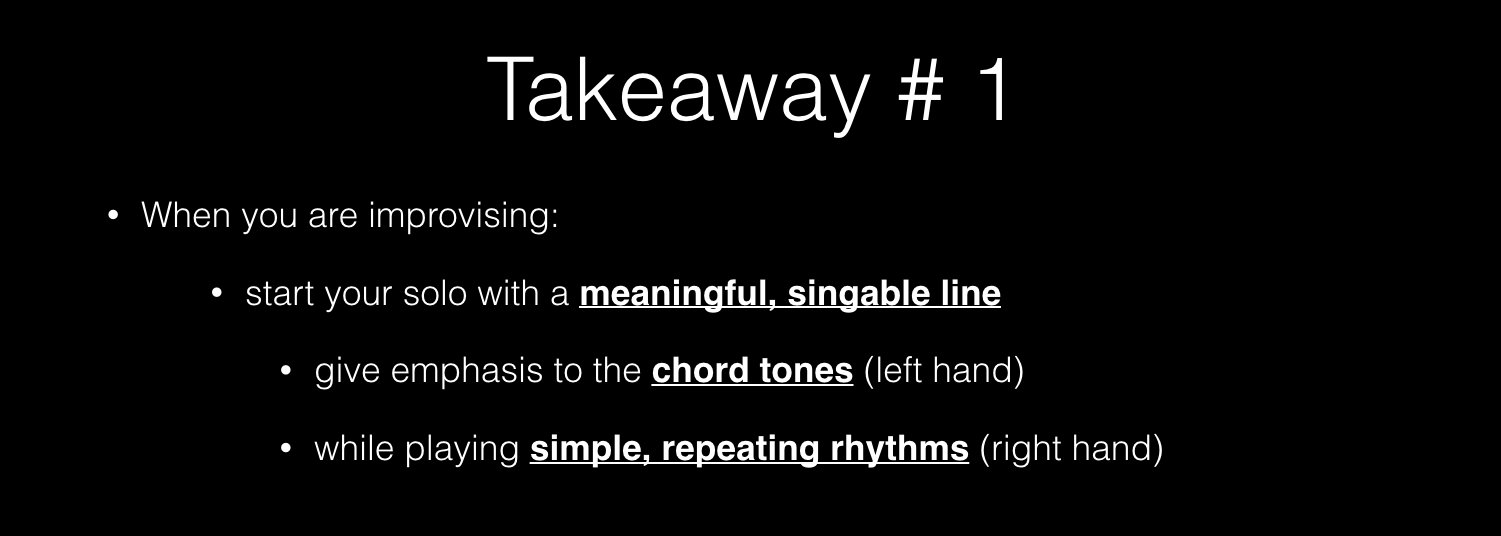
Lick 2

For this lick, Trey centers around F mixolydian.
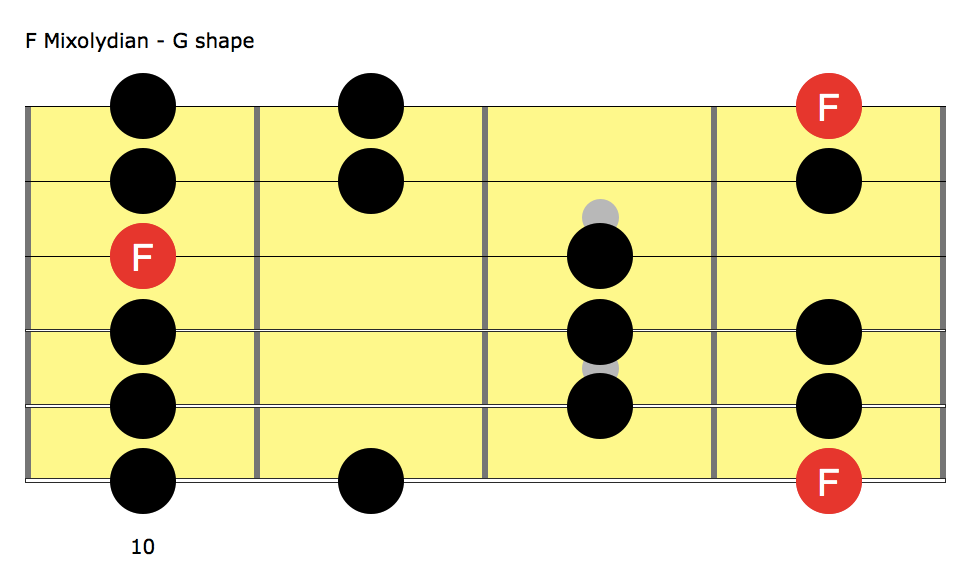
In the last lick, we talked about honing in on the chord tones.
In this lick, we see a different approach, the idea of using one scale over both chords, without a hard focus on what chords we’re hitting on which beat.
This phrase primarily serves an idea bridge to lick 3, which is the real centerpiece of the first part of the solo.
But for lick 2, it seems that he is already starting to think more rhythmically instead of melodically.
Lick 3

This is one is a bit of a mindbender. It’s difficult and almost pointless to play this without a backing track, metronome, or behind the actual studio recording – so keep that in mind when you’re practicing.
I recall reading an interview (and i believe it was Mike who said this, but i could be wrong) where he talks about seeing Sonny Rollins play a long, swinging solo with just one note. Trey pretty much does that here. He’s thinking and playing the guitar like a drummer.
There’s even a bit of telepathy when he copies Fish for three hits.

Now melodically, there’s something interesting going on. Trey chooses the A note to be his “drum.” This note is the 3rd of the F chord, but it also the Major 7th of the Bb chord.
These two chord tones are especially “sweet.” It’s why this lick is basically one note, but it still maintains to sound so pretty.
Lick 4

This is another lick where we start by thinking and playing like a drummer, by continuing to really pound a single note (A note, 10th fret B string and 14th fret G string) like we did in Lick 3.
Now there is also a shift going on in Trey’s approach. In the first lick, we talked about choosing notes to emphasize the chords underneath. When the chord changes, you change your note too.
In this lick, we have a different approach. We are taking one scale and playing it over both chord changes.
What we have here, is a lick based out of the notes in F hexatonic major.
This scale is the F major pentatonic scale, with the addition of the natural 4th – the Bb note. In our universe, this is often referred to as the “Allman Brothers scale,” or the “Dicky Betts scale.”

Lick 5
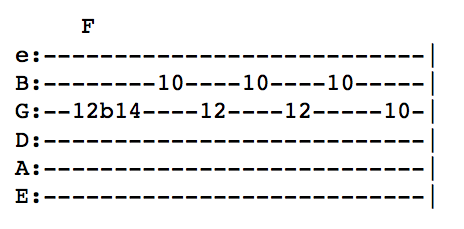
Here we have another lick that serves as an idea bridge for lick 6, which is another head turner.
This is just a simple motif that we will be repeating, and all of the notes are right out of the F major pentatonic scale.
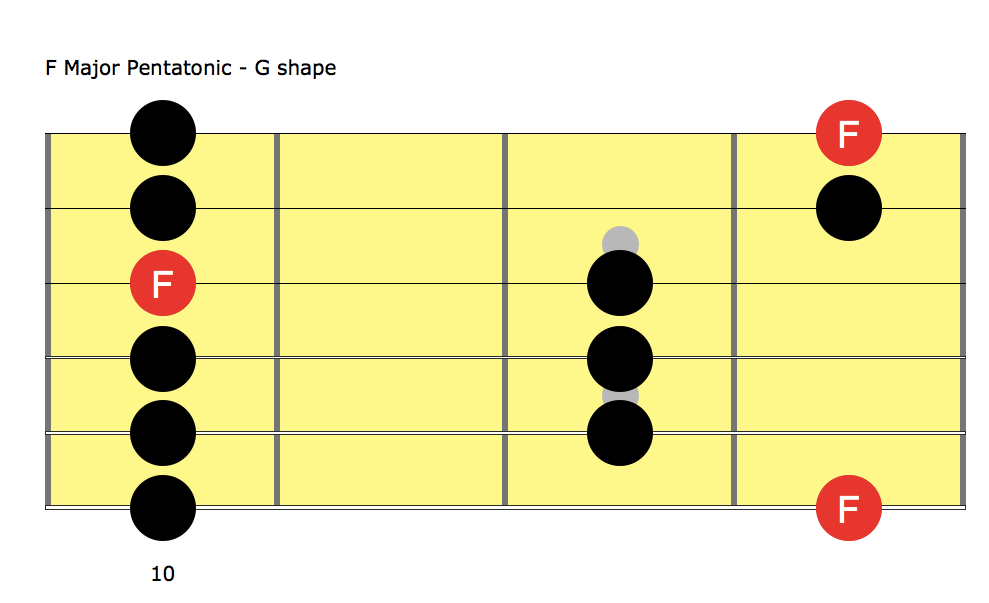
Lick 6
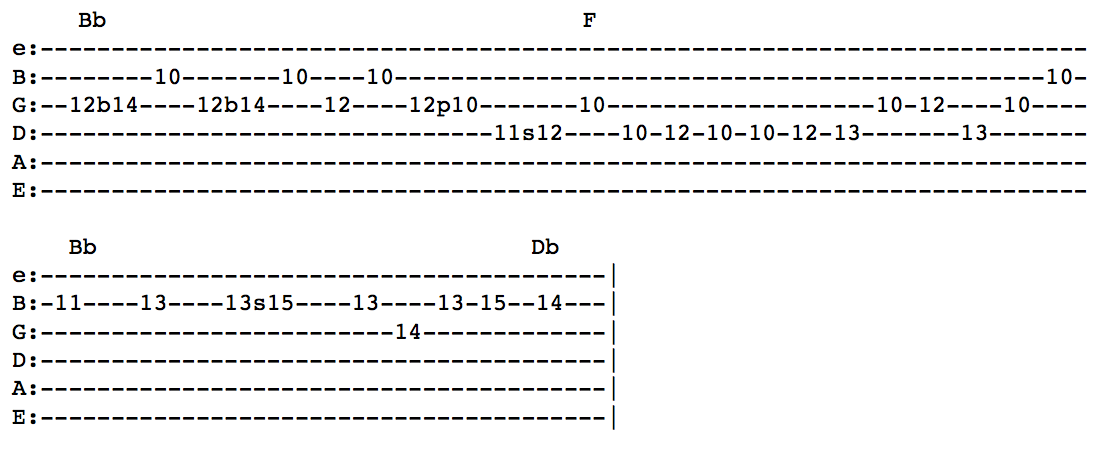
We start this one by repeating lick 5, and doing some more footwork on F mixolydian over the F chord.
When we get to the Bb chord, he purposefully targets the root (Bb note, 11th fret B string), and then the 3rd (D note, 15th fret B string).
At the end, trey ends up surrounding the root of the Db (14th fret B string), which is a common bebop approach. Trey definitely spent time analyzing such great improvisers like Charlie “Bird” Parker, which brings us to our next takeaway:

Consider that we just had a relatively long stretch of an F major tonality, so Trey keeps the listener’s attention by seamlessly flowing into the chord change to Db
When you nail the chord changes, you are harnessing the essence of what makes this lick so powerful.
So, this would be a good time to learn your Db arpeggios, in case you haven’t.
Here’s a diagram in our primary soloing position:
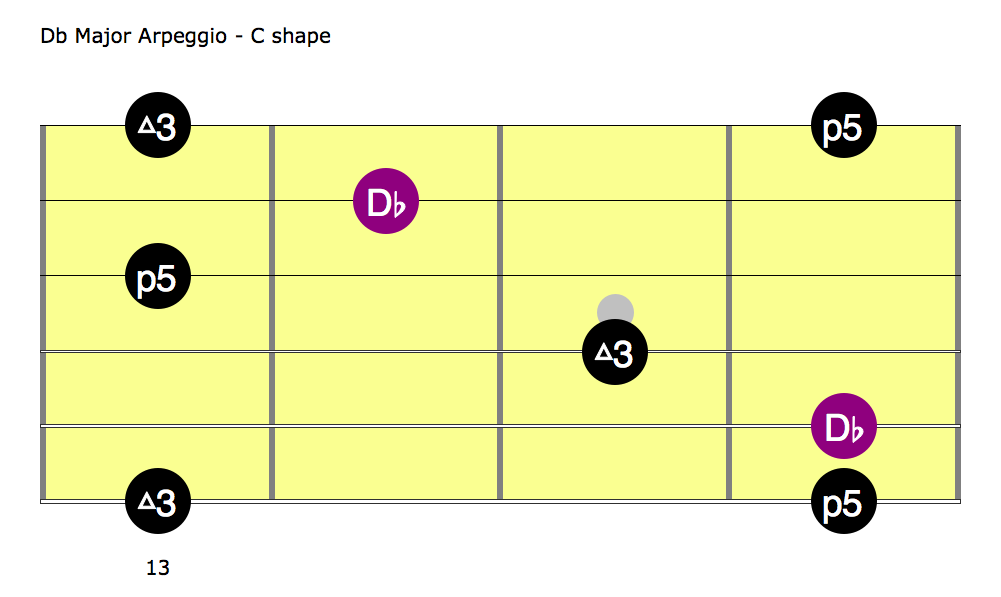
Lick 7

To nail the Db, Trey plays the Db major arpeggio down and then up. He then hits the 13th of Eb (C note, 13th fret B string) and nails the 3rd (G note, 12th fret G string).
If we were going to put these notes under a microscope, there’s a bit of tension when we have the 13th (non chord tone) of Eb on the downbeat and then some resolution when we have the 3rd (chord tone) of Eb.
We talked about the Db arpeggio in the previous lick, so let’s take a look at the Eb arpeggio in this position.
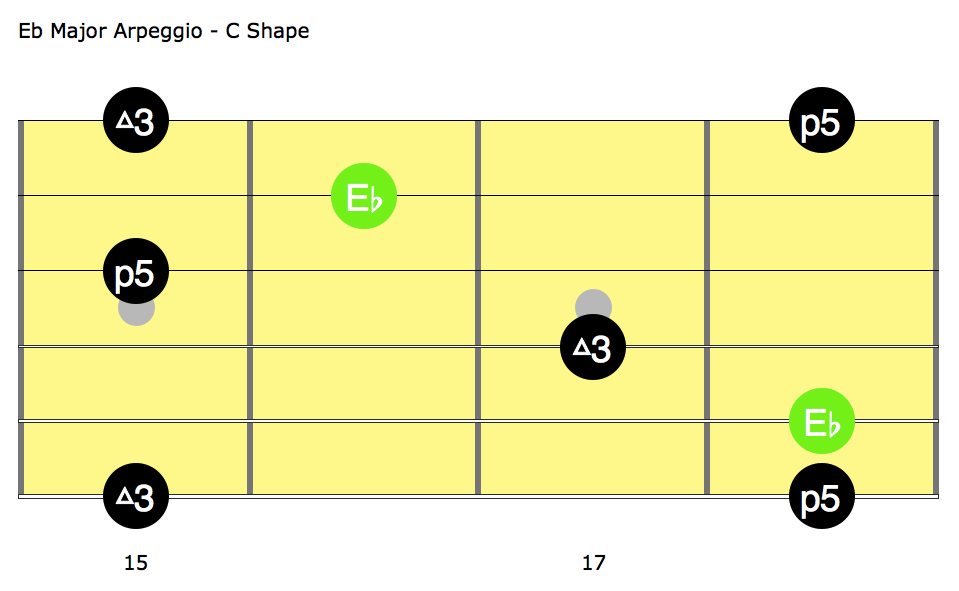
Lick 8

This is one of my favorite licks in the solo, and one that you can rip off to any dominant or blues-based context you come across.
First, we have some efficient and beautiful voice leading when play from the 3rd of Eb (G note, 15th fret e string) directly to the root of the F chord (13th fret e string).
Then Trey lays down an incredible phrase that mixes F mixolydian with an F minor blues scale.
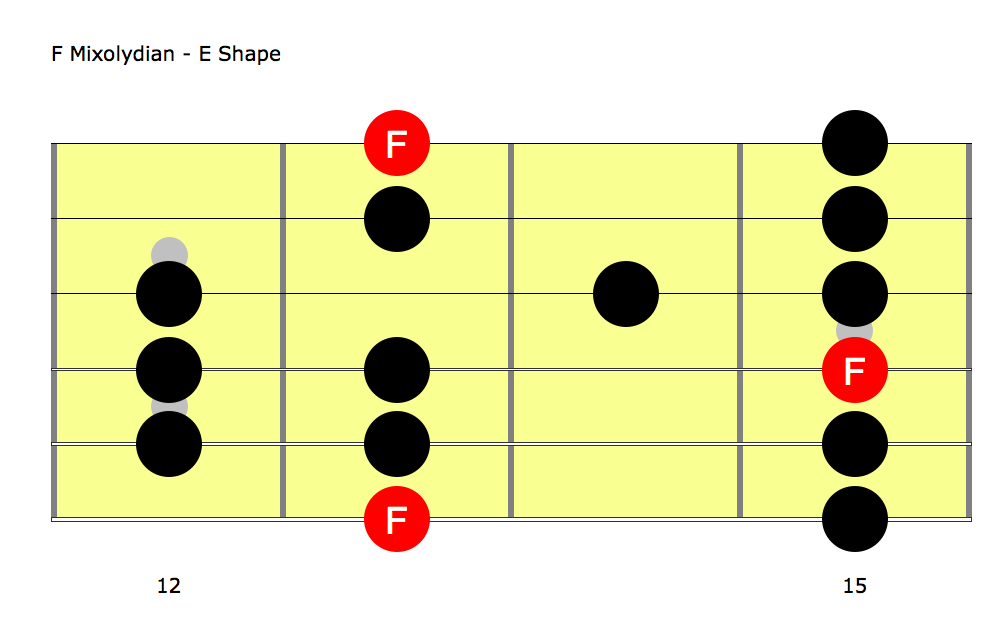
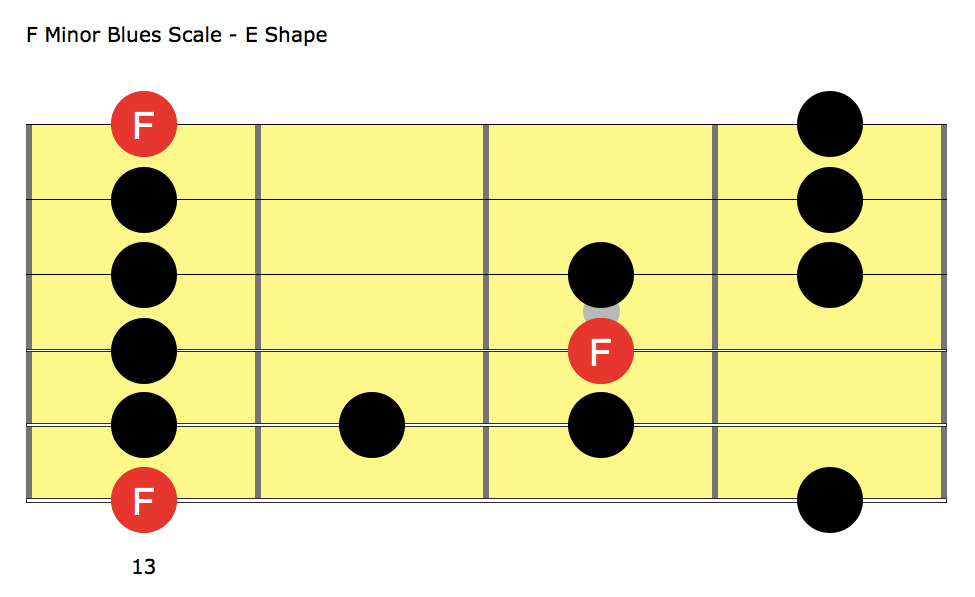
Lick 9

Now we’re back on the Db, and Trey opts for the Db major arpeggio approach. He connects the 5th of Db (Ab note, 13th fret G string) to the 5th of Eb (Bb note, 15th fret G string)
Then we have another arpeggio approach on the Eb. We efficiently voice lead by connecting the 3rd of Eb (G note, 15th fret e string) to the 3rd of F (A note, 17th fret e string).
Lick 10

This is the third time in the solo that we face the Db, and the two previous times, trey improvised by using a Db major arpeggio. But this time, he lands on the 3rd of Db, uses the F minor pentatonic to snake his way down to the 5th of Eb.
Trey lets us in on a little secret here, he could have used the F minor blues scale or F minor pentatonic over the whole Db – Eb – F progression, but he chooses not to. Instead, he saves this approach for later in the solo, which is why it sounds ‘extra’ good.
Whether we know it or not, our ears crave the blues, which is why it feels so satisfying to finally hear this lick at this point of the solo.
And speaking of blues, the final lick over the F is a classic blues phrase, but it doesn’t necessarily sound like one because its in such a different/unique context.
Lick 11

Well we’ve made it to the last lick in the solo, so thank you for sticking around!
Before we continue, I’d like to ask if you to please like this video and subscribe to the amarguitar channel if you enjoyed this video. Also, let me know which lick was your favorite in the comments below.
For our final lick, Trey superimposes a Db major triad over the F chord, which is at the beginning of this lick.
This is an interesting approach because this superimposition creates tension, and there’s some melodic resolution when the chord changes to Db and we are still playing the Db arpeggio.
Trey connects the 9th of F (G note, 15th fret e string) chromatically to the 3rd of Db (F, 13th fret e string).
We have some subtle tension in this lick because Trey hits a non-chord tone on the downbeat of the the Db chord change. Trey also lands on the 13th of Db (Bb, 15th fret G string), which is an interesting note choice.
Ok back to the Limb solo. After landing on the 13th of Db, he then does a bebop style approach where he uses passing tones to surround the 3rd of Eb. Of course, he hits that 3rd on first downbeat of the chord, giving a strong sense of stability.
Finally, Trey ends the solo with a good ol fashioned F power chord on the 3rd fret, which is really important. It brings us to our final takeaway:
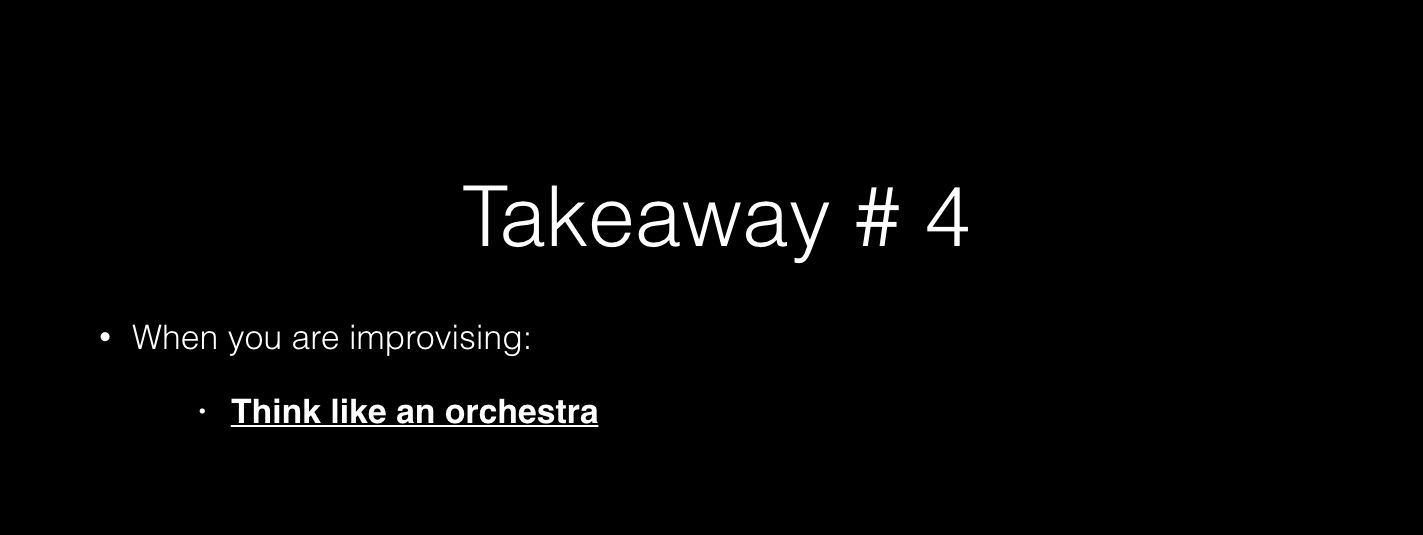
Hopefully you got some value out of this lesson.
Please subscribe to amarguitar on youtube for more videos/articles like this.
Thanks for tuning in!
Gear Used for This Video
Performance:
- 2013 Paul Reed Smith Hollowbody II in Livingston Lemondrop Finish
- Vintage 1966 Fender Deluxe Reverb Amplifier
- Celestion Classic Lead 80 guitar speaker, 8 ohm
- Pickboy Pos-a-Grip Jazz Classic Tortoise Shell Cellulose 1.50mm Picks
- Planet Waves Custom Series Right Angle Guitar Cable
Recording:
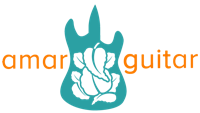
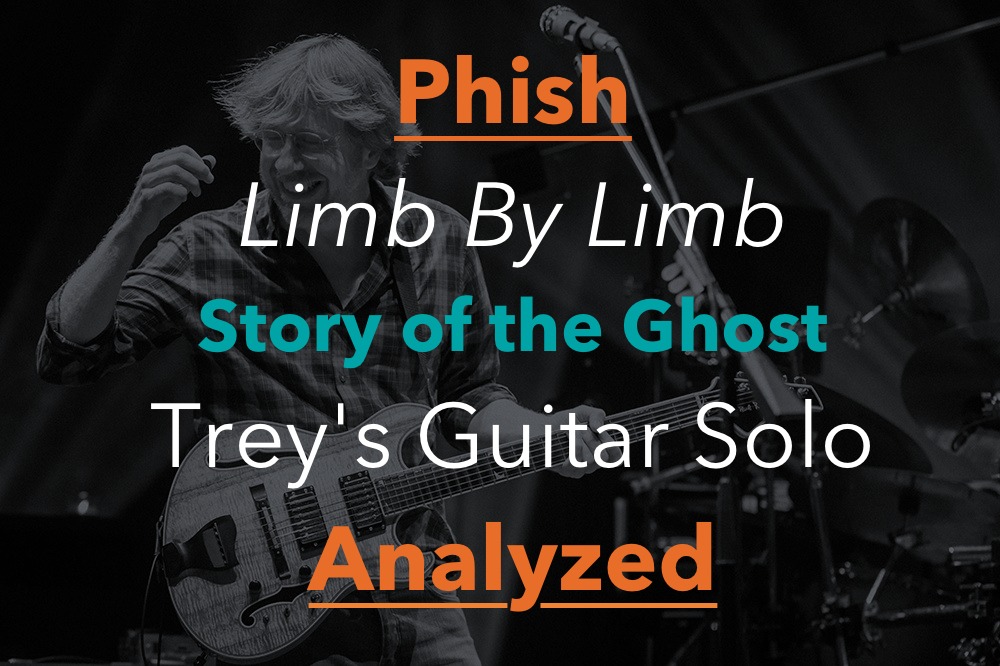






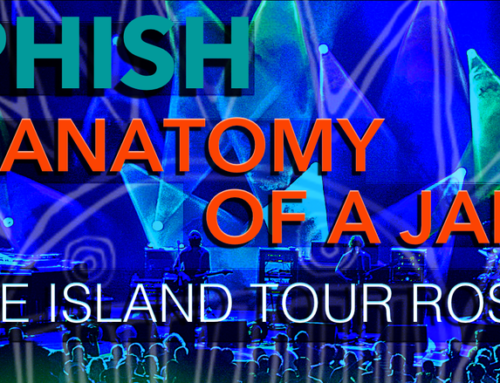




Leave A Comment